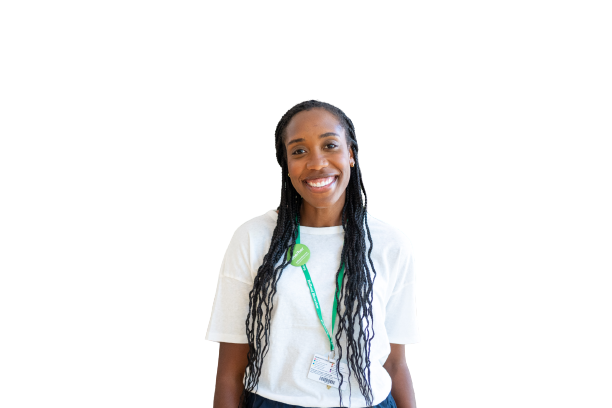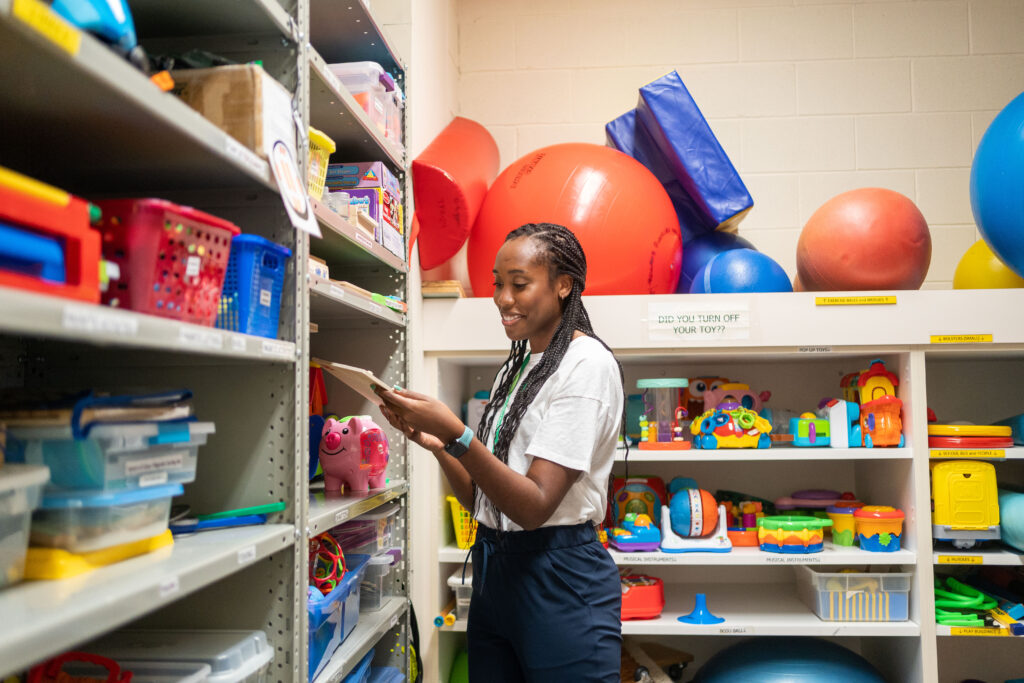Imagine inclusive and empowering care

Imagine baking muffins in the kitchen to work on upper body strength. Or using a hula hoop to practice getting dressed.
These are just a few of the imaginative ways that occupational therapists at Holland Bloorview approach rehabilitation for kids and youth who have an acquired brain injury. Some clients, who are six months to 18 years old, have experienced a stroke or have been in a car accident.
Rashan Edwards, an occupational therapist on the brain injury rehab team at Holland Bloorview, supports kids during their outpatient or inpatient stay. Rashan imagines a future where disability is embraced—and she’s starting with listening to clients and families and centering them as experts of their own lived experiences.
How do you use imagination in your approach to care?
Rashan: Kids are in the hospital and that’s not their home environment. We’re so clear that this is not their typical environment. We want to get them back to their communities. One of the things that we do a lot as occupational therapists is imagine what their actual environment is like. We do everything that we can to make that translatable from the hospital to their home because we really want sustainability. For example, if I’m working on dressing with a client, sometimes we’ll use hula hoops to practice pulling up pants or using a theraband to practice pulling on a shirt.

How do you collaborate closely with clients and families to provide them with personalized care?
Rashan: When I meet a family or meet a client, I get to know them first. That really is what guides my approach because a lot of it really depends on the client, what they like, what they dislike, what’s going on at home and their social situation. Because every child and family are so different, I really listen on the first day. I never start treatment right away. My assessment begins with really getting to know them and their goals.
That’s what I love about occupational therapy. There isn’t a cookie cutter way to do the work. It’s so dependent on the kid that you’re seeing. And to me, that’s so much more meaningful because I know I’m working on what is important to them.
What do you love most about Holland Bloorview’s approach to care?
Rashan: We really do our best to listen. We’re very clear that the clients and families are the experts of their own lived experience, and we really take that to heart. I’m the occupational therapist, but the child is an expert of what they like. And that’s not a small thing for us. The clients and families are an essential part of their care team.
One of the things I also really like about Holland Bloorview is that we know we’re not perfect. We’re very open to feedback. We’re always wanting to get better. We’re a collaborative hospital. Clients and families are on our boards. We have client and family mentors, clients who take part in advocacy initiatives and clients and families who volunteer. I just love that they really know that they’re the reason why we’re here and the reason why we do this work.
How do you bring fun and imagination into a client’s rehab journey?
Rashan: A part of it is letting them be kids. I’ll bring a game out and I think it’s going to go one way. And then all of a sudden we’re on a pretend pirate ship and that’s what the kid brought using their imagination.
The children are so fun. They bring the imagination.
